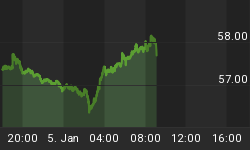Fashion, as much as theory, drives economic policy. The public debate is simplistic. Names are given to policies. Keynesians, monetarists and supply-siders are supported like football teams. Bees get into bonnets.
Alan Greenspan has one which buzzes loudly. When the economy was booming, the Fed was slow to raise interest rates, arguing that strong productivity held back inflation. Today's risk is deflation, but he's still backing productivity to support the economy. Standby for the next Fed meeting: can productivity cure the common cold?
We risk running into a liquidity trap, in which monetary policy ceases to be effective and, in Keynes's words, is like pushing on a string.
The Keynesian solution is to increase budget deficits. This is opposed, on the football supporters' basis, by those who think deficits are wrong in principle. (Those who think that massive unemployment is even more unprincipled support a different football club.)
The Fed encouraged the asset bubble. The mistake can't be undone. To pragmatists, large deficits and a return to inflation aren't good things, they are simply better than deflation and unemployment. Don't start from here.
Europe's "Growth and Stability Pact" calls for budget deficits to be kept below 3% of GDP. It's not much better in the US, where 43% of all government spending is at the state and local level, whose governments are required to balance their budgets.
It's likely that the recent tax cut is the last fiscal boost for some time ahead. There's a high chance that it's not sufficient to stop deflation. The other teams now have the ball. We will have to rely on the monetarists and the supply-siders.
Deflation in Japan has been a boom time for almost nobody. An exception has been for those who don't realise that we have shortage of demand, not of supply.
There are only two ways of stimulating demand. You can try fiscal or monetary policy. In Japan many claim that both have been tried and failed. So the retreat from economic reason has been dramatic. The most common form of nonsense is to claim that shutting down zombie companies will make the economy flourish.
This is supposed to reduce competition so that the survivors boom. It doesn't and they don't. Demand falls as unemployment rises and things just get worse. Cost cutting goes with falling not rising profits, as experience shows and theory explains.
It's rumoured that this is not understood by fund managers. According to David Bowers of Merrill Lynch, writing in the FT on 26th May, three-quarters of fund managers think that cost cutting will improve corporate earnings. If the supply-siders have the football, we can expect folly to be rampant. But I am hopeful that in Europe and America it will be recognised that the problem is not too much supply, but too little demand.
Demand must be stimulated. If politics makes further fiscal boosts unlikely, then we must rely on the monetarists. The question is whether they can push on a string.
The answer is probably yes, but it will be difficult. Short-term rates can't fall much more, so the Fed will have to bring down long-term ones. This means more than just letting them fall as they have in Japan. To stimulate an economy by cutting rates central banks must push them down, not just let them fall.
All of this looks great for bond markets. US bonds may be over-valued but they will go up if the economy is weak and go up even faster if the Fed buys them in. In Europe things are even better (for bonds not people), as yields are higher and deflation more entrenched.
Everybody knows this and the pros are up to their eyes in Euro denominated bonds. They will either all be wrong, or even more right than they dared dream.
In the US advertisements in the papers for gold are common. They may soon be overtaken by foreign bond funds. The pros are already invested, but the amateurs have the real money.















